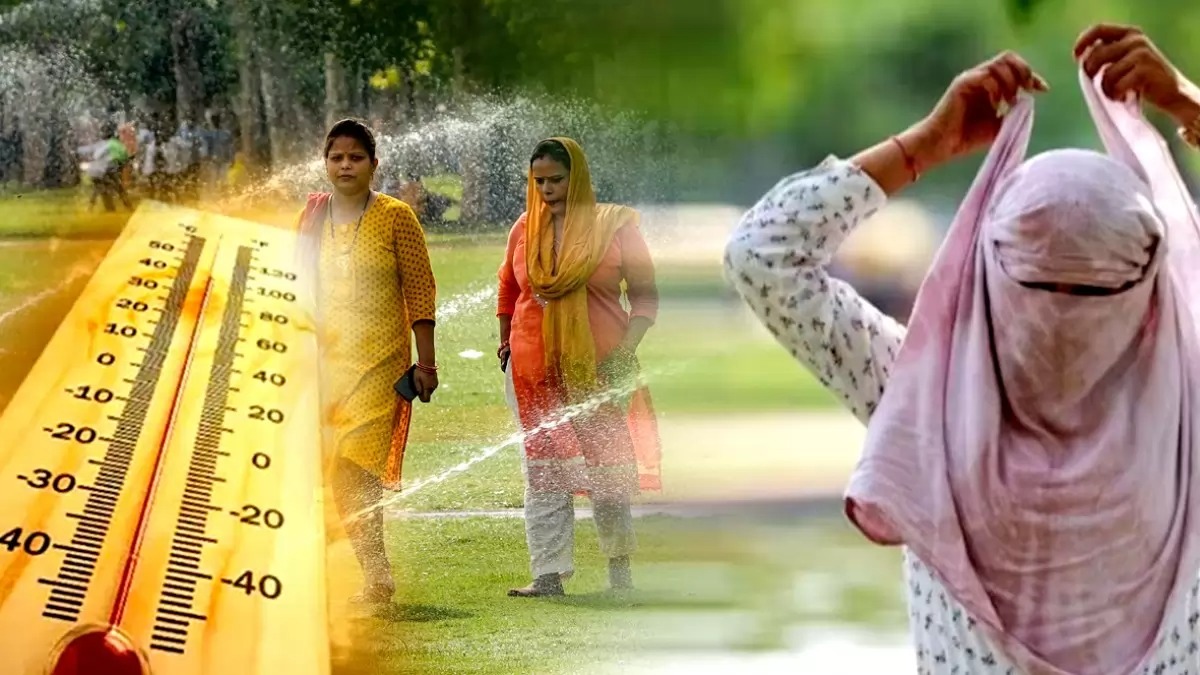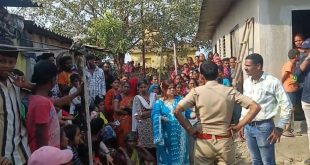 North India is currently grappling with an extreme heat wave, which has resulted in severe consequences for many regions. As temperatures soar, the impact on human lives has been devastating, leading to numerous deaths and overwhelming local healthcare systems.
North India is currently grappling with an extreme heat wave, which has resulted in severe consequences for many regions. As temperatures soar, the impact on human lives has been devastating, leading to numerous deaths and overwhelming local healthcare systems.
Heat Wave Casualties
The recent heat wave has claimed the lives of at least 40 people across various states, including Uttar Pradesh, Bihar, Odisha, Jharkhand, and Rajasthan. Tragically, among the deceased are 25 election workers in Uttar Pradesh and Bihar who were deployed for the ongoing Lok Sabha elections.
Most Affected Regions
The heat wave has struck several states with varying degrees of severity:
Uttar Pradesh
Uttar Pradesh has been the hardest hit, with 17 reported deaths. The intense heat has not only taken lives but also posed a significant challenge to the healthcare infrastructure.
Bihar
In Bihar, 14 deaths have been reported. The heat has disrupted normal life and put additional pressure on medical facilities, already strained by the ongoing elections.
Odisha
Odisha has reported 5 deaths due to the heat wave. The state is experiencing extreme temperatures that are making life difficult for residents.
Jharkhand
Jharkhand has also suffered, with 4 reported deaths. The heat wave continues to affect daily life and health services.
Rajasthan
Rajasthan, known for its hot climate, has seen at least 5 deaths attributed to the current heat wave. The state’s already high temperatures have soared even further, causing distress among the population.
Specific Death Toll
Uttar Pradesh
The state has recorded the highest number of fatalities, with 17 people succumbing to the intense heat. The impact is widespread, affecting both urban and rural areas.
Bihar
In Bihar, the death toll stands at 14. The state has been grappling with high temperatures that have significantly affected daily activities and public health.
Odisha
Odisha has reported 5 deaths, with many regions facing unprecedented heat levels that have exacerbated existing health and infrastructure challenges.
Jharkhand
Jharkhand’s death toll has reached 4, with the heat wave causing severe health issues and increasing hospital admissions.
Rajasthan
Rajasthan has confirmed at least 5 deaths. The state, already accustomed to high temperatures, is struggling with the added intensity of the current heat wave.
Hospitalizations Due to Heat Stroke
Over 1,300 people have been hospitalized due to heat stroke and related conditions. Hospitals are working tirelessly to manage the influx of patients, providing necessary treatments such as rehydration and cooling therapies.
Kanpur: The Hottest Area
According to the Indian Meteorological Department (IMD), Kanpur recorded the highest temperature in the country at 48.2 degrees Celsius. This extreme heat has positioned Kanpur as the epicenter of the heat wave.
Heat Wave Conditions in Other Areas
Haryana
In Haryana, the temperature in Sirsa reached 47.8 degrees Celsius, making it the second hottest place in India. The heat wave has severely affected daily life and agricultural activities.
Delhi
Delhi’s Ayanagar area recorded a maximum temperature of 47 degrees Celsius. The capital city is experiencing severe heat wave conditions, impacting both residents and infrastructure.
Forecast and Meteorological Data
The Indian Meteorological Department (IMD) has predicted that the situation might improve slightly in the next two to three days. However, the heat wave is expected to persist in several regions, necessitating continued caution and preparedness.
Impact on Daily Life
The heat wave has had a profound effect on daily life, causing health issues such as dehydration, heat stroke, and exhaustion. Public activities have been disrupted, with people advised to stay indoors and limit exposure to the sun.
Preventive Measures and Precautions
Authorities have issued several advisories to help the public cope with the heat:
- Stay Hydrated: Drink plenty of water and avoid sugary or alcoholic beverages.
- Avoid Direct Sunlight: Stay indoors during peak heat hours (10 AM to 4 PM).
- Wear Light Clothing: Opt for loose, light-colored clothing to stay cool.
- Use Fans and Air Conditioning: Make use of cooling appliances to maintain a comfortable indoor temperature.
Role of Local Authorities
State governments and local authorities are taking various steps to mitigate the impact of the heat wave:
- Setting Up Cooling Centers: Providing shelters with air conditioning and water supplies.
- Health Check-ups: Organizing health camps to monitor and treat heat-related illnesses.
- Public Awareness Campaigns: Educating the public on heat wave precautions and first aid measures.
Election and Heat Wave
The heat wave has posed significant challenges for election workers. In Uttar Pradesh, at least 15 workers have died due to heat-related issues. Measures are being implemented to ensure the safety of those involved in the election process, including providing adequate hydration and rest breaks.
Climate Change and Heat Waves
The increasing frequency and intensity of heat waves can be linked to long-term climate change. Rising global temperatures contribute to more severe weather events, including heat waves, which are becoming more common and more intense.
Global Perspective
Heat waves are a global phenomenon, affecting countries worldwide. By studying international responses and strategies, India can improve its own preparedness and response to extreme heat conditions.
The current heat wave in North India has had a devastating impact, with numerous deaths and widespread health issues. As temperatures remain high, it is crucial for individuals and authorities to take necessary precautions to protect against the heat. Long-term strategies to address climate change are also essential to mitigate the increasing frequency of such extreme weather events.
 Suspense Crime Sach Ka Dam
Suspense Crime Sach Ka Dam


